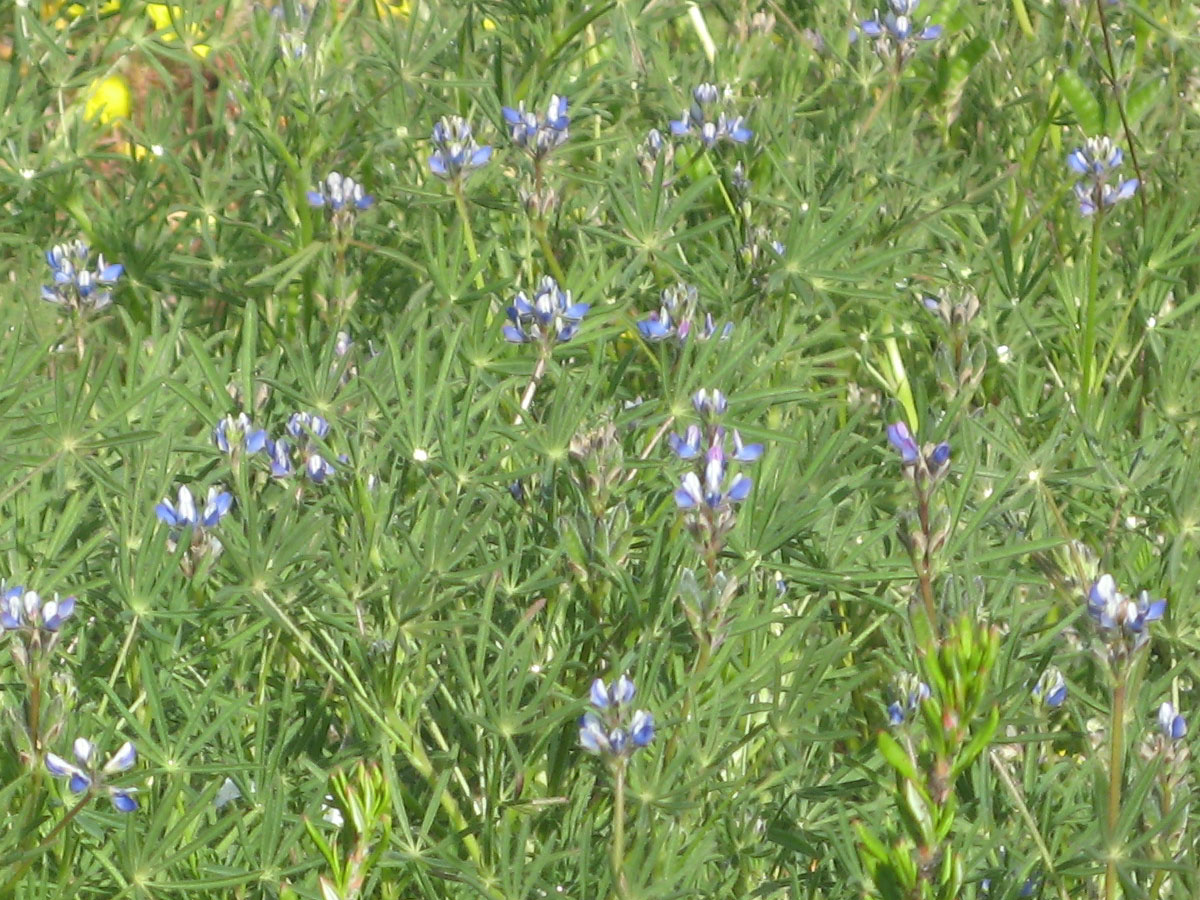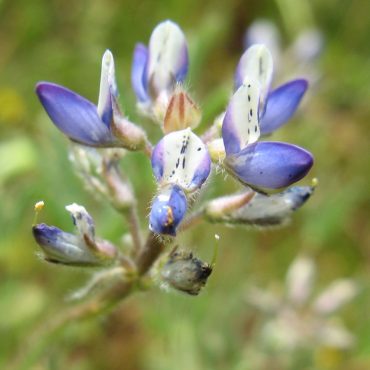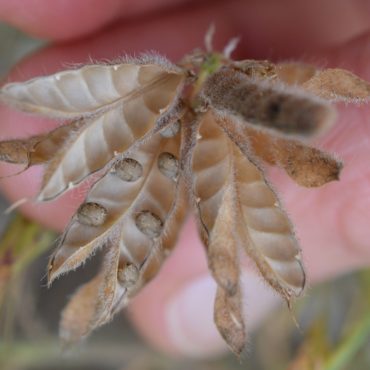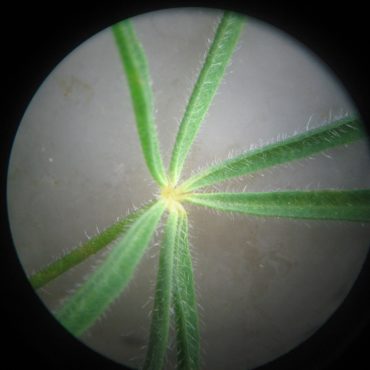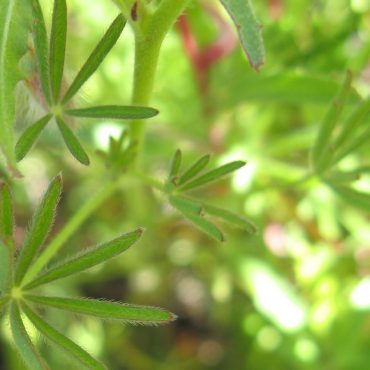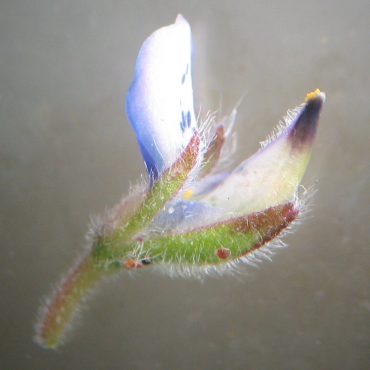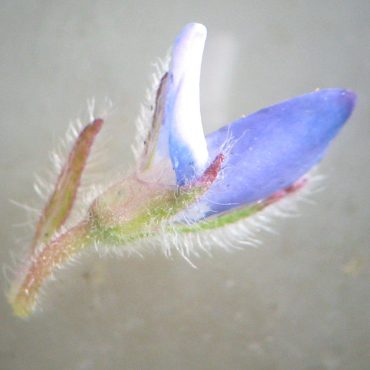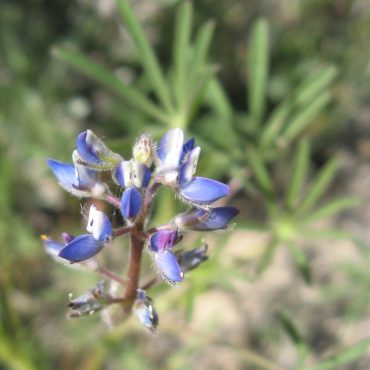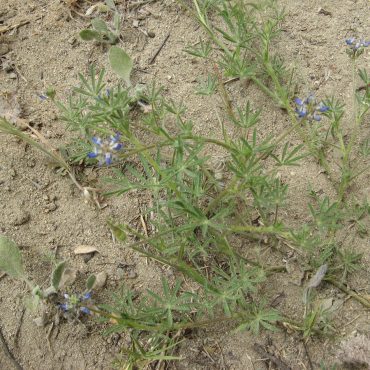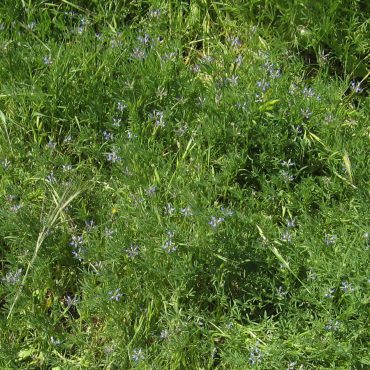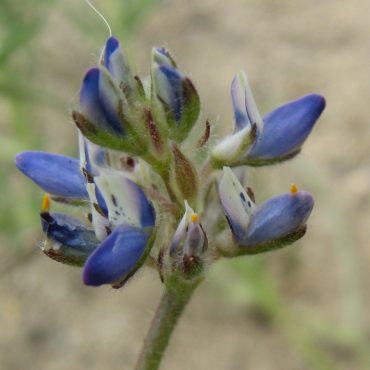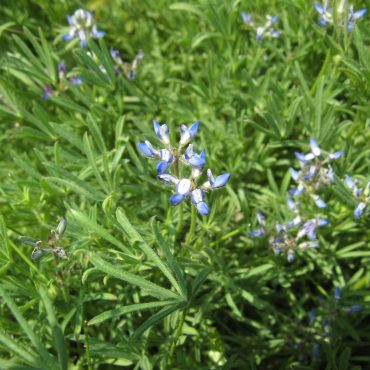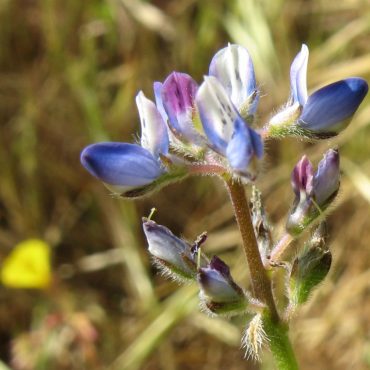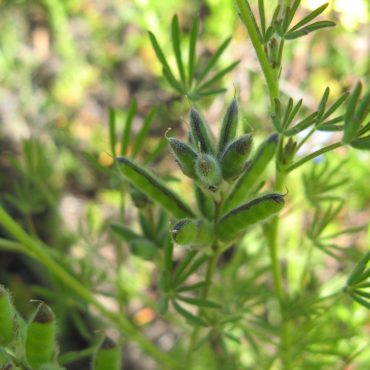Dove lupine is a diminutive annual lupine from a taproot that stands or spreads four to 16 inches (10-40 cm) and is often obscured by surrounding vegetation. The leaves are up to 1¼ inches across, on petioles of similar length. Leaves are palmately compound with 5-9 leaflets that are tapered and rounded on the end (not truncated like those of our other lupine, collared lupine, L. truncatus). The leaflets are often folded up along the midrib. All parts of the plant are more or less covered with soft hairs.
Flowers occur along terminal spikes, little taller than the surrounding foliage. Although they are generally described as having several whorls (or pseudo-whorls) of four to five flowers, ours are generally smaller, consisting of three or fewer whorls. A flower is small, reported to be less than ½ inch (1 cm) in length; ours are barely ¼ inch (0.5 cm). The small calyx is green, tipped with red-brown, two-lipped, the upper lip with two deep teeth, the lower lip with three smaller teeth. Flowers have the shape typical of a pea flower (papilionaceous): bilaterally symmetrical with one large petal (the banner) held upright, two lateral petals (the wings) directed forward and enclosing two smaller petals (the keel) which, in turn, encloses the pistil and stamens. The banner is obovate, keeled on the upper edge, which produces a groove dividing the lower surface. The banner is white with blue around the edge and a pattern of dark purple spots in the center. The banner may become reddish on older flowers,23,34,292 but this is not as conspicuous as it is with some other lupines (e.g. collared lupine). The two wing petals are weakly fused along lower margins, mostly blue-violet on the exposed surfaces. The obscured keel petals are whitish with purple tips. Flowers of all white or pink have been reported in the literature.4 The pistil has a superior ovary with a simple style and a small domed stigma, occasionally visible projecting from the keel and wings. There are ten stamens fused into a column by the filaments. Dove lupine generally blooms between March and June.1
Fruit are typical pea pods. When dry, the two valves twist apart, releasing several small seeds.

